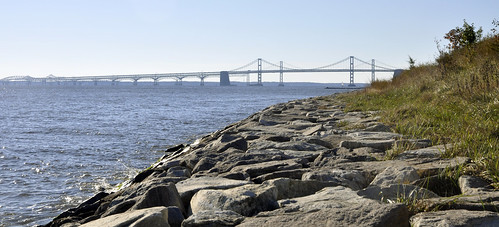Maryland Submits Chesapeake Bay Clean-Up Plan
Final Phase III Watershed Implementation Plan Sets Path to Achieving Bay Restoration Goals by 2025
 Maryland has developed a comprehensive plan for the next steps in continued progress in restoring the Chesapeake Bay.
Maryland has developed a comprehensive plan for the next steps in continued progress in restoring the Chesapeake Bay.
The Phase III Watershed Implementation Plan — submitted Aug. 23 to the U.S. Environmental Protection Agency — was developed to meet Maryland’s pollution reduction targets by 2025 as part of a multi-state bay restoration effort. Maryland developed the plan using extensive engagement with local governments and the public to identify aggressive but achievable pollution reduction strategies that balance responsibilities among wastewater treatment plants, urban stormwater runoff, septic systems, farms and other key sectors and problem solvers.
The plan is also the first to factor in the potential impacts of climate change. In addition, a first-ever holistic plan is being developed among all of the bay states and EPA specifically to reduce harmful effects of the Conowingo Dam on water quality in the lower Susquehanna River and the Chesapeake Bay.
As Maryland implements its plan to achieve 2025 goals, the state will continue to hold EPA to its role of requiring upstream partners to do the same.
“Restoring the Chesapeake Bay continues to be a top priority, and this locally driven, comprehensive plan keeps us on track to meet and sustain our restoration goals and show continued regional and national leadership,” said Governor Larry Hogan. “We will continue to insist that every state and federal partner in the bay watershed does its fair share to help restore this national treasure.”
The Bay “TMDL” and “WIP”s
In 2010, the U.S. Environmental Protection Agency established the Chesapeake Bay Total Maximum Daily Load, or “TMDL,” to reduce the amount of nitrogen, phosphorus and sediment polluting the bay and its tributaries. The TMDL is the scientific estimate of the maximum amount of these pollutants the bay can receive to remain healthy and meet water quality standards.
Maryland, the other five bay watershed states, and Washington, D.C., developed three phases of Watershed Implementation Plans, or “WIPs,” that serve as roadmaps to reduce water pollution. The most recent Phase III plan – developed by the Maryland Departments of the Environment, Natural Resources, Agriculture, and Planning in collaboration with other members of the Governor’s Chesapeake Bay Cabinet – builds on previous WIPs and factors in significant public input. Each new plan incorporates improved data, improved understanding of natural systems and enhanced modeling tools to better determine pollution rates.
Maryland’s Phase III plan Executive Summary states: “Maryland sees improving signs of recovery for Chesapeake Bay in both water quality and the Bay’s living resources, including bay grasses and blue crabs. This third phase of Maryland’s Chesapeake Bay Watershed Implementation Plan (WIP) identifies the strategies, opportunities, and challenges to meet the 2025 Chesapeake Bay restoration targets and sustain restoration into the future.”
Public participation
The Maryland Department of the Environment, in conjunction with the Maryland Department of Agriculture and the University of Maryland’s Harry R. Hughes Center for Agro-Ecology, conducted 11 regional workshops in 2018 to inform participants about the WIP process and obtain feedback. A draft of the Phase III plan was released for public comment in April. Three information sessions and one webinar were held in spring 2019, featuring an overview of the draft Phase III WIP and the opportunity to ask questions of representatives from the Departments of the Environment, Agriculture, Natural Resources, and Planning.
During the April 12-June 7, 2019, public review of the draft WIP, more than 200 comments were received. The final WIP was revised to address comments by, for example, including more information on the impact of land conservation policies, as well as strategies with the potential to reduce atmospheric deposition of nitrogen to the Bay and its watershed.
“Governor Hogan’s Chesapeake Bay Cabinet has worked together closely with citizens and communities to ensure the final plan delivers outstanding environmental results, with greater emphasis on preventing pollution in the air and on the land and increasing climate resiliency and green infrastructure solutions,” said Ben Grumbles, Maryland’s Environment Secretary and Chair of the Governor’s Bay Cabinet.
Maryland has submitted the plan to EPA for that agency’s review and approval. EPA has committed to completing reviews of each state’s plan or communicating its need for more time for review within 60 days.
Maryland’s final Phase III WIP is available at the Maryland Department of Environment website.
Investing in the Chesapeake Bay
Since taking office, Governor Hogan has invested record funding of more than $5 billion toward wide-ranging bay restoration efforts, resulting in marked improvements in the bay’s health. In the spring of 2019, Maryland, the Chesapeake Bay Commission, and other partners pushed Congress for an increase in bay funding to help us reach our 2025 milestone. Recently, the U.S. House of Representatives passed a fiscal year 2020 federal budget that includes $85 million in bay funding, an increase of $12 million.
